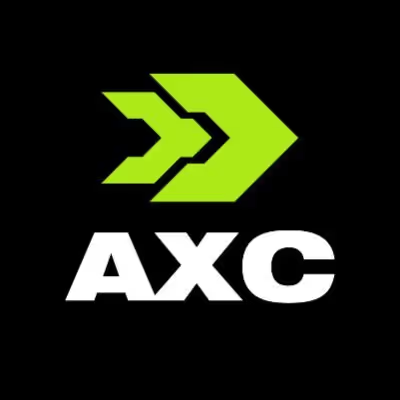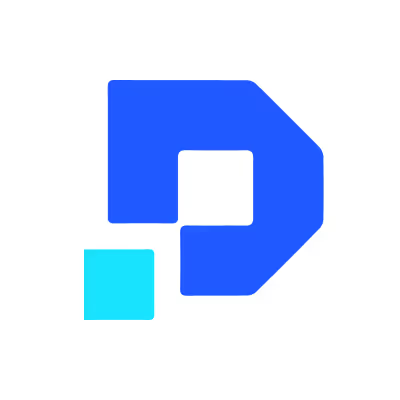Ascend Accelerator Cohort 1: Seven RWA Projects Shaping The Tokenized Future
.avif)
The Real-World Asset (RWA) market is shifting from concept to execution. As institutions and crypto-native builders converge, the challenge is no longer proof of concept but scaling in an increasingly competitive landscape.
Recently, we launched Ascend, a high-impact accelerator program designed to fast-track institutional-focused RWA startups.
Backed by leading partners across infrastructure, capital, and policy, Ascend equips teams to bring RWAs onchain and and scale faster through hands-on mentorship and ecosystem support.
With over 40 applicants, we narrowed the first cohort down to seven projects that are shaping the next chapter of RWA adoption.
Introducing Cohort 1: Pioneers of RWA Adoption
AXC Labs - @AXCLabs

AXC Labs connects traditional finance to onchain infrastructure by transforming illiquid alternative assets into composable, liquid onchain markets. Based in Hong Kong and focused on APAC, AXC is tackling one of the region’s most persistent capital-market frictions: limited distribution for issuers and high funding costs.
On the sell side, managers of alternative assets struggle to reach new pools of capital. On the buy side, these assets remain locked behind high minimums and long lock-ups, shutting out most investors. AXC Labs bridges that gap by bringing the accessibility and efficiency of DeFi to both sides of the market.
Globally, but especially in APAC, demand for alternative yield is surging while access remains constrained. Private credit, revenue-based financing, and specialty finance are still trapped in illiquid structures with limited distribution and steep funding costs. Meanwhile, investors across the region, from family offices to emerging-market savers, are often locked out by high minimums and long lock-ups.
AXC Labs solves both sides of this equation. By making these assets composable and liquid onchain, it expands distribution for issuers and lowers their cost of capital while opening high-quality, previously untouchable opportunities to a much broader pool of investors. This is the connective tissue bridging East and West, institutional capital and DeFi liquidity, and an essential step in bringing trillions in offchain assets into the onchain economy.
Canary - @canary_proto

Canary is building the leading oracle infrastructure purpose built for RWAs, making institutional asset transfers secure, seamless, and efficient. Already live with major partners like Plume, Morpho, Ether.fi, and LayerZero, Canary currently secures over $30 billion in assets.
Historically, every RWA platform, from Ondo to Superstate to Midas, has had to build its own bespoke oracle system to bridge offchain assets with onchain representations. Canary changes that by offering a dedicated, standardized oracle layer built for the unique needs of RWAs.
For RWA adoption to scale, institutions need more than smart contracts. They need verifiable, tamper-resistant data about ownership, settlement, and transfers. Oracles are the connective tissue between the real world and blockchain, yet most tokenization platforms have been forced to reinvent this wheel, adding cost, complexity, and risk.
Canary removes that burden. By providing a battle-tested, security-focused oracle service purpose built for RWAs, Canary allows issuers and platforms to focus on product and distribution rather than rebuilding core infrastructure. This is the plumbing that enables the next generation of RWA markets: trusted, standardized, and ready to scale.
DeSyn - @DesynLab

DeSyn is reimagining liquidity in DeFi. It operates as an Open Liquidity Alliance, supplying Liquidity-as-a-Service (LaaS) across chains and protocols rather than building another isolated product. It weaves together investors, protocols, portfolio managers, curators, and security partners into a unified, transparent, onchain liquidity marketplace.
By standardizing disclosures, unifying methodology for returns, and building lifecycle assurance into every strategy, DeSyn aims to turn liquidity from a fragile cost center into durable, shared infrastructure.
Liquidity today is fragmented, opaque, and volatile, and that remains a major obstacle for DeFi’s next phase. Projects struggle to find reliable sources of liquidity, while LPs struggle to discover trustworthy strategies or opportunities.
The paradigm is shifting from LPs chasing yields across protocols to expert curators building trusted liquidity strategies, and DeSyn is leading the charge. With $1.4B+ in TVL, it’s already proving that a unified liquidity layer is both viable and valuable.
Glider - @glider_fi

Glider is a platform for creating auto-rebalancing DeFi portfolios in a fully blockchain-abstracted manner. No gas, no signing, no bridging, yet fully non-custodial through an embedded wallet.
Users can build portfolios using any trading, investing, or yield-farming strategies and add triggers for automated execution. Onchain investing suffers from poor UX and high complexity, which are major barriers to mainstream adoption. Users shouldn’t have to worry about bridging or managing multiple chains.
Glider removes those frictions and levels the playing field between algorithmic traders and retail investors. Power users get the automation they’ve been hacking together for years, while newcomers can invest like pros without wrestling with infrastructure.
DeFi needs the simplicity of a Robinhood account. By making sophisticated strategies as easy as a few clicks, Glider has the potential to take onchain investing from niche to mainstream.
Paimon - @Paimon_Finance

Paimon is an RWA platform and asset originator built to bring institutional-grade RWAs such as private equity, private credit, and pre-IPO shares into the hands of everyday investors. Built by a team of Wall Street veterans from firms like UBS, Goldman Sachs, and Franklin Templeton, and backed by YZiLabs, Paimon’s assets include tokenized exposure to companies like SpaceX and Stripe, alongside institutional credit pools such as Blackstone’s Private Credit Fund.
Today, top-tier private deals go exclusively to those with deep pockets and privileged access, locking out most market participants. Retail investors have no way to access high-yield, institutional-grade private credit opportunities like Blackstone’s BPCF or pre-IPO equity in companies like Stripe.
Paimon leads the charge in bridging private and public markets. DeFi began as a way for everyday people to access opportunities once reserved for insiders, and private markets remain the final frontier. By tokenizing and democratizing these assets, Paimon is laying the foundation for the next era of global capital markets.
Tradible - @tradible

Tradible reinvents the collector experience by fusing digital packs with real-world physical cards. Open a digital “mystery pack” to instantly reveal a vaulted, authenticated card, then hold, trade, redeem for the physical asset, sell it back at fair market value or take an 80% instant buyback.
This model closes the gap between the thrill of collecting and onchain liquidity, accelerating ripping, collecting, and flipping while eliminating frictions like IRL purchases, card storage, and shipping. All of this is presented through a web2 friendly UI, so most users don’t even realize they’re interacting with a crypto product.
The The global sports memorabilia and trading cards market is valued at $33 billion in 2025 and projected to reach $271.2 billion by 2034, growing at a 22.1% CAGR, according to Market Decipher. Pokémon cards alone have outperformed many traditional benchmarks, appreciating over 3,800% since 2004 compared to the S&P 500’s ~483% in the same period.
Tradible solves key pain points across this massive market while demonstrating a crucial principle: blockchain isn’t the product, it’s the infrastructure. Tradible shows how consumer crypto products should abstract blockchain entirely to deliver seamless user experiences.
Voltaire - @voltaire_fi

Voltaire is an onchain asset management platform bringing institutional-grade strategies to a market long dominated by passive crypto investing. Founded by a veteran of Point72, one of the world’s leading hedge funds, Voltaire packages advanced approaches like managed futures, long/short, and portable-alpha frameworks into composable, tokenized vaults accessible onchain.
The explosive growth of stablecoins has created a global dollar-based economy that moves at crypto speed but lacks a robust savings and investment layer. Today, most stablecoin capital sits idle, chases short-term yield, or rotates into speculative trades.
Voltaire fills that gap. By bringing sophisticated, institution-tested strategies onchain, it enables both individuals and treasuries to move beyond simple staking or money-market-style returns. This strengthens the financial engine beneath the stablecoin economy, turning it from a passive settlement layer into a productive, capital-compounding one.
